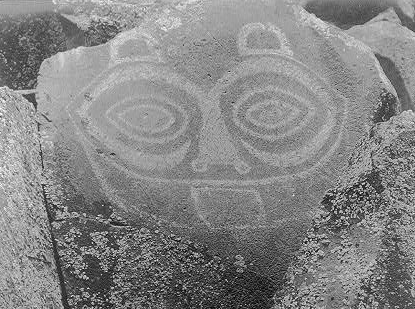Tsagaglalal “She Who Watches” Petroglyph
Status: Saved!
Year Listed: 1993
Location: Horsethief Lake State Park, Klickitat County
In the Spring of 1993, vandalism at one of the world’s most famous rock art sites motivated the Washington Trust for Historic Preservation to take action in Klickitat County. The petroglyph and pictograph known as Tsagiglalal, or “She Who Watches” had been damaged and the Trust placed it on Most Endangered Properties list. Not long after this event the US Army Corps of Engineers and Washington State Parks stepped in to protect the site.
Later in 1993, the rock art was removed from the Most Endangered Places list and is now protected with restricted access through guided State Park Ranger tours. Tsagiglalal, as the Wishram Native American community refers to this rock art, is in nearly every book on the subject around the world. Edward Curtis photographed it and published it as part of his 1910 volume on Native American lifeways. The oral history about this particular rock art panel is rich and clearly ties the local Native American communities to the land. Historic resources like this one are considered sacred by Native Americans, and their vandalism is taken very seriously by those communities and the preservation-minded public as well.
To many, these are not just ancient sites but also have meaning in today’s world and can teach all of us valuable lessons about respecting the land and its resources, including the historic resources. This particular stretch of the Columbia River was noted time and again by early explorers like Lewis and Clark and David Thompson, and even Edward Curtis later, as a very important location where many Native Americans would gather to trade and interact socially. In fact, archaeological evidence throughout this region shows proof of trading that dates back millennia.
For tour information, please go to the Columbia Hills State Park website.

